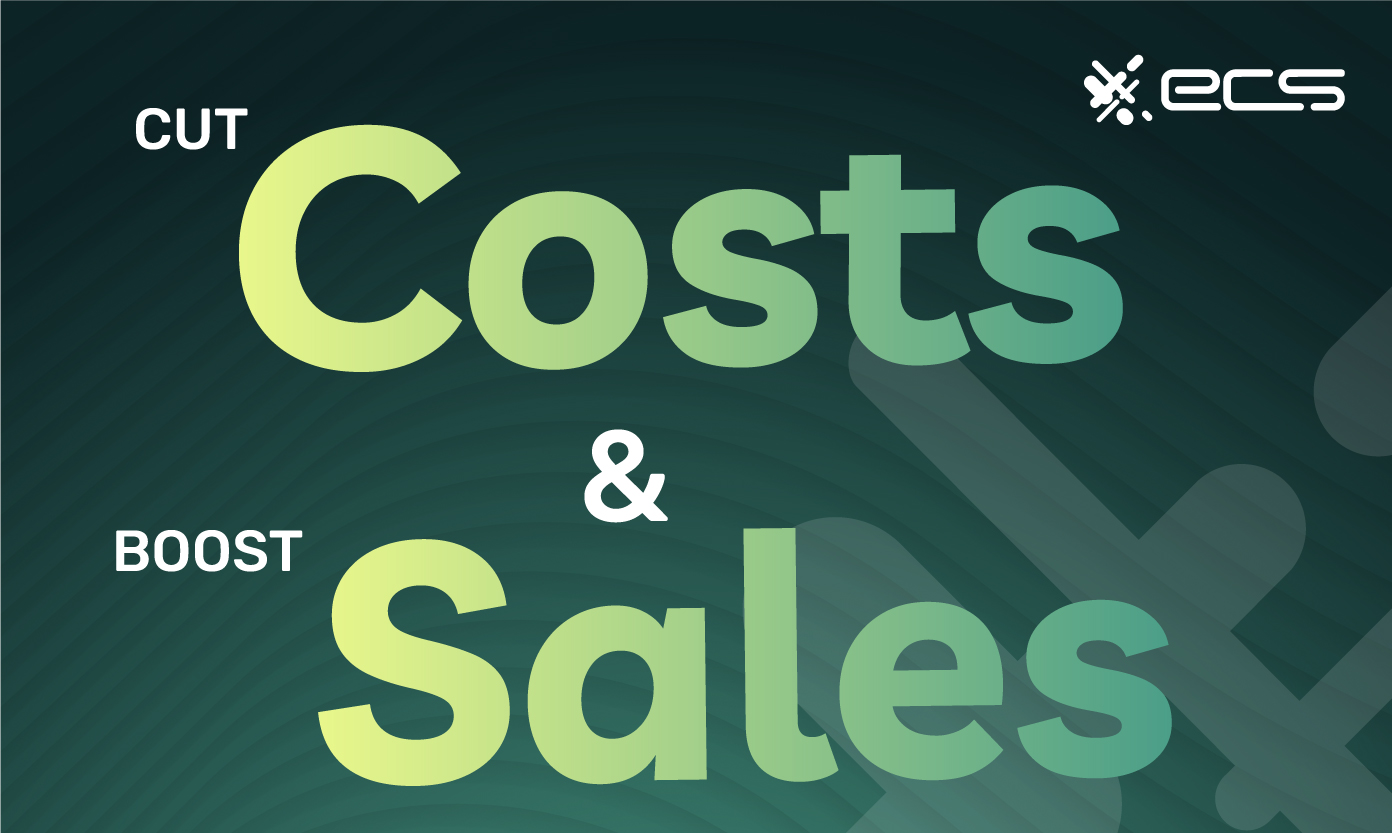Considering a new payment processor for the upcoming holiday season can be a strategic move that ensures your business doesn’t leave money on the table. In addition to potential cost savings, switching to a more efficient payment processing solution can set the stage for your most profitable season yet.
Below, we’ll go over why switching to a new payment processor can help you boost sales and cut costs. We’ll also explain how switching before the holiday rush can make this one of the most profitable seasons for your business yet.
The Holidays Bring in a Significant Amount of Revenue For Retail Businesses.
For many retailers and other businesses, the holiday season represents an annual opportunity to boost sales and help finish the year strong. In fact, many large retailers don’t turn a profit until the holiday buying season comes along.
In fact, holiday transactions account for about 25% of a business’s annual revenue. This shows how important the holiday rush is for many businesses, no matter how big or small they are. But the holiday rush isn’t a guaranteed period of rising sales. Businesses need to carefully plan for this period months in advance. Making sure you have the right promotions and messaging ready is a key part of this preparation.
This means your email campaigns and marketing materials are all ready to go as soon as the time comes to take advantage of holiday shoppers. But one area that often gets ignored is your business infrastructure, in particular, your payment processing and merchant services.
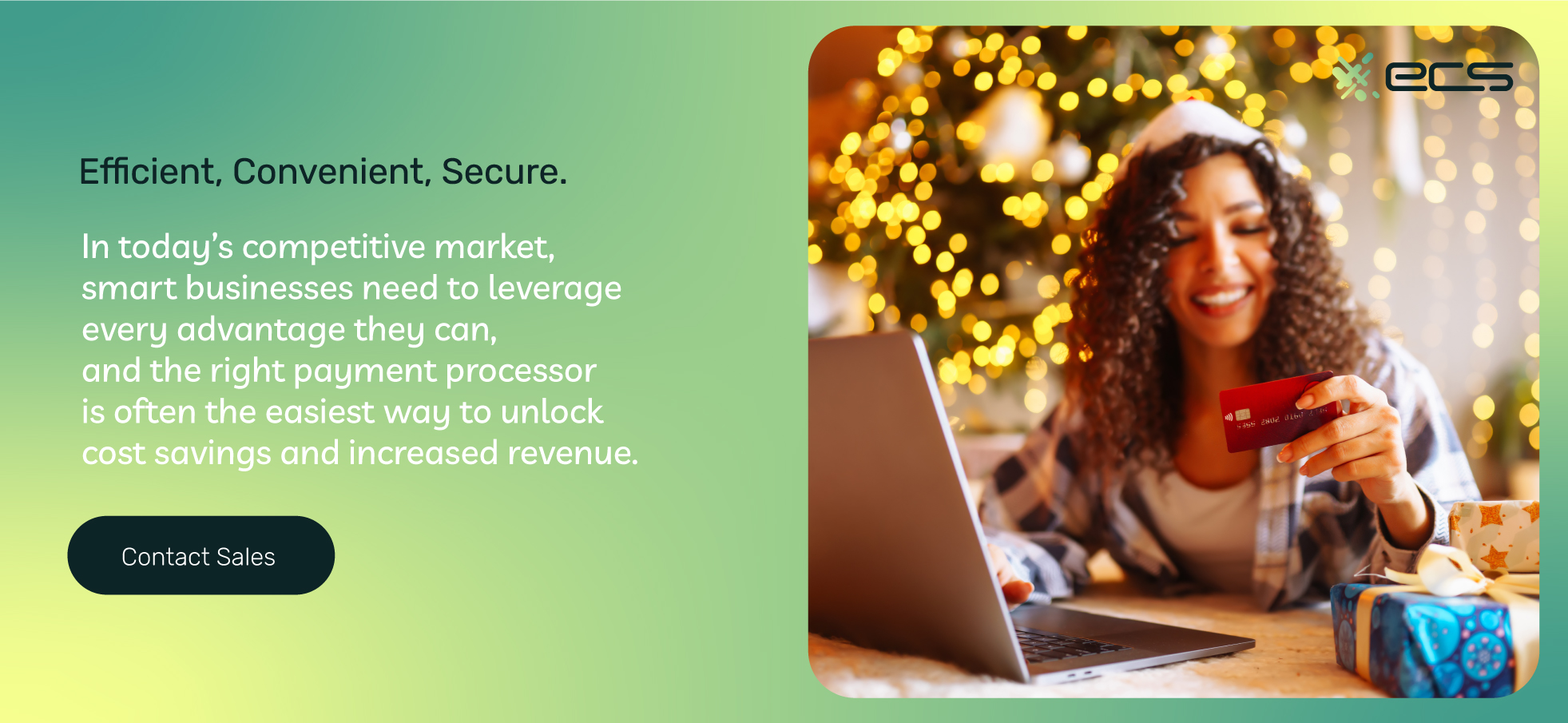
Should I Switch to a New Payment Processor?
If you currently own or run a business, you likely already have a payment processor. Like most businesses, you probably chose a payment processor when your business was just starting out, and that’s who you were stuck with until now.
When you were first starting your business, you probably had different priorities than you do now. You’ve probably grown some. You likely also know more about your business and your customers than you did at the start. All of this means that if you were to choose a payment processor today, the process may look much different than it did when you originally chose one.
Because of this, it’s important to reevaluate what you need in a payment processor and how a different processor could give your business a competitive advantage. Not only that, there are likely cost savings and customer experience improvements that will come with a new payment processor.
In today’s competitive market, smart businesses need to leverage every advantage they can, and the right payment processor is often the easiest way to unlock cost savings and increased revenue.
Dealing With Contracts
You may have a contract with your current payment processor. If this is the case, you’ll need to look over the contract to see what the length is and when you can terminate it.
Depending on the contract, there may be auto-renewal clauses. With an auto-renewal clause, if you don’t contact the processor to cancel by a certain date, it automatically renews for a new term. Sometimes, people also refer to this as an evergreen clause.
Regardless of your payment situation, you should always be on the lookout for these clauses. When deciding to switch payment processors, check the dates for when it renews and start to plan accordingly to have a new one chosen by that time.
If you don’t have a contract with your payment processor, you can freely switch whenever you want. Even if you do have a contract, there may be cancellation fees, but depending on how impactful the switch will be to your business, it may be worth it to absorb the fees and switch to a better payment solution.
Hardware Lease Contracts
If you lease any hardware through your current payment processor, those may be under contract as well. It’s also common for these to be under a separate contract from your processing agreement.
You’ll want to check what the terms are for the lease and if there are any early termination fees.
Ask For Your Full Statements
Before switching, you’ll want to ask your current payment processor for your statements. You may be receiving these electronically, so you can print your most recent statements yourself.
The reason for this is that your new payment processor will want to see your monthly volumes and average transactions. This will help them determine how to find you the lowest processing rates.
When you first chose a payment processor, you likely didn’t know your transaction volumes since you were just starting out. This means you may be able to receive a better rate now that you have a baseline volume and business history.
How Hard Is It to Switch to a New Payment Processor?
Payment processing for products and services is complex, but much of that complexity happens across the payment networks and financial institutions involved in processing. As a merchant, you simply have to connect to the payment network to run your transactions.
You can look at the payment platforms as similar to the internet providers that you use for your homes or business. You can change internet providers, but your systems at home or at the office that rely on the internet don’t need to change at all.
If you switch to a better internet provider, most of your systems work better. You may even save money. Switching to a new payment processor is very similar. You are essentially changing the provider you use to access the payment networks and other financial institutions.
Very little needs to change within your business or your existing systems. You can likely see a very big improvement in service and cost savings when choosing a better payment processor.
However, even though you generally don’t have to make changes to your current business systems, you may want to take full advantage of any new processing features you will have access to.
For example, in a retail setting, this may be a great time to upgrade your card readers. Another option may be adding a point-of-sale POS system if you currently aren’t using one. The right payment processor can make these upgrades easy, and you can start to see improvements in your business almost immediately.
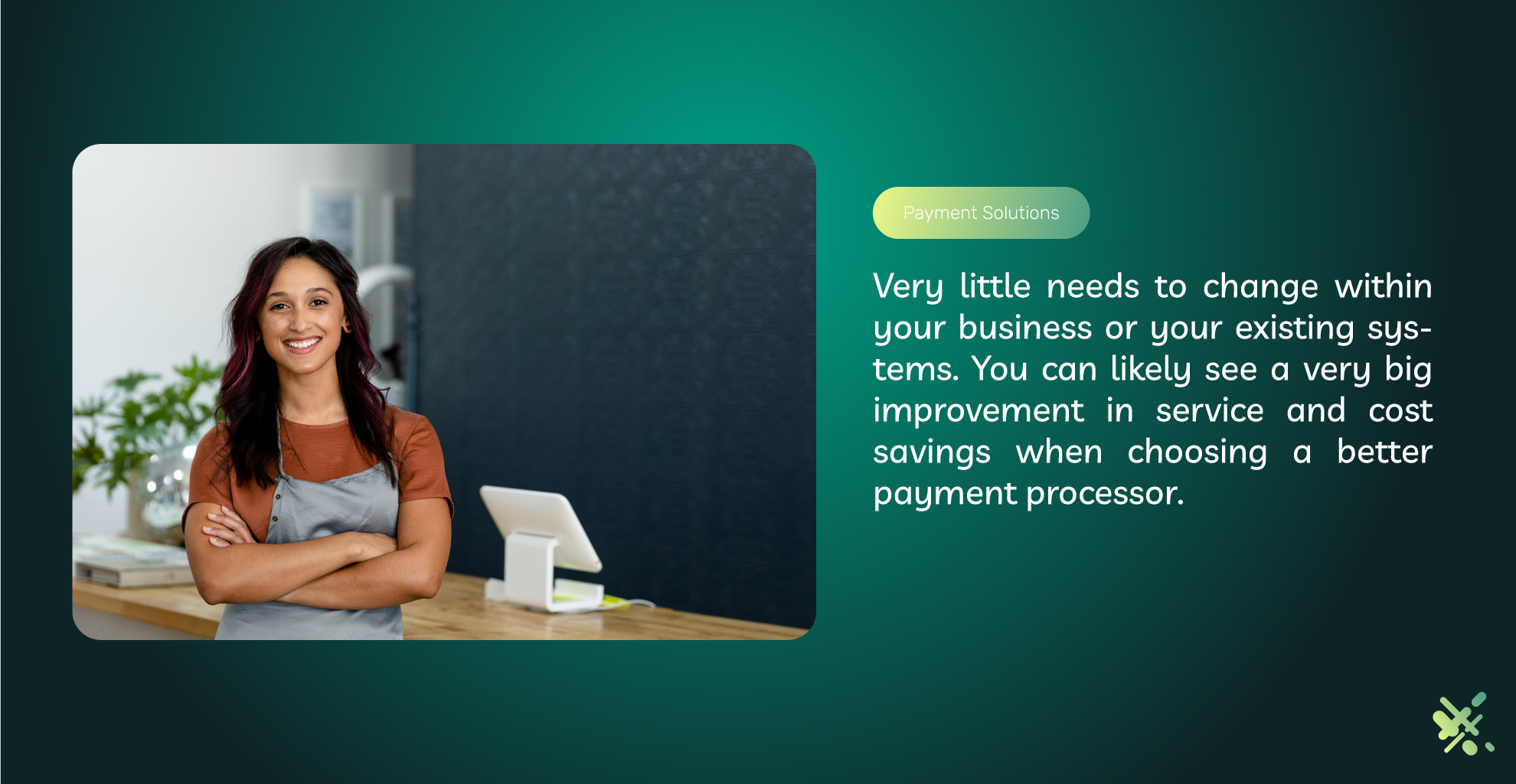
What Does Switching to a New Payment Processor Involve?
It may seem like switching payment processors is a huge undertaking, but the actual switch is quite simple in most cases.
The majority of your payment processing takes place over a network known as the payment gateway. The payment gateway is what connects the merchant, their payment processor, and the other financial institutions involved in processing credit card transactions.
Similar to the example earlier, you can look at the payment gateway almost as if it were your internet provider. But instead of connecting you to the internet, it connects your business to the card payment networks and your payment processor.
Most of the switch will involve configuring your current business systems to use the new payment gateway and credentials used by your newly selected payment processor.
For example, let’s say you run a retail business and are using a popular POS system. Within the POS software, there will be an area for settings and configuration. You simply navigate to this area and look for the payment gateway settings.
The payment gateway settings menu will prompt you to enter your payment gateway credentials –username and password. There is also a token or series of numbers.
You can obtain this from your new payment processor or directly from the payment gateway’s merchant dashboard. You then just replace your old payment gateway information with your new credentials, and a majority of the switch is complete.
Hardware Terminals And Card Readers
You may also have terminals or card readers; this may be all you have instead of a POS system. In this case, it’s a similar switch, and you will just need to configure the terminals to use the new payment gateway credentials.
Some cases involve adding a new device, like a terminal, through the payment gateway’s merchant dashboard.
If you do use any hardware or terminals, make sure to mention this when shopping for new payment processors. They can help you determine the hardware’s compatibility with the payment gateway they offer.
E-commerce Businesses
If you run an e-commerce business that sells goods or services, the switch is generally easy as well. Most e-commerce stores will be using some sort of shopping cart software. There are many options, such as Zen Cart, WooCommerce, and others.
Whichever shopping cart software you are using will have an area to enter your payment gateway information. Similar to the previous explanations, you simply navigate to this area of the software on your website and enter the new credentials.
What Are The Benefits Of Switching Payment Processors?
One of the main reasons that business owners don’t consider switching payment processors is that they are unaware of the possible benefits.
If something goes wrong with a business’s payment processing, that’s generally when they consider switching. However, everything might work fine, but moving to a new processor could still offer benefits.
Below are some of the common benefits when switching to a new payment processor
Lower Fees
The most obvious benefit, is probably lower payment processing fees and while it’s an important one, it may not be the most important.
However, you never want to be paying more processing fees than you have to since that’s simply throwing money away for nothing. For this reason, comparing fees is usually the first place you’ll start when looking at potential new payment processors.
To make the best determination, you’ll want to study your current statements and look at your current fee structure. Pay attention to processing fees and any monthly fees, gateway fees, and other charges on your statement.
Many of these are common, but you still want to carefully go over each one so you can compare the total monthly charges to your new payment processor options.
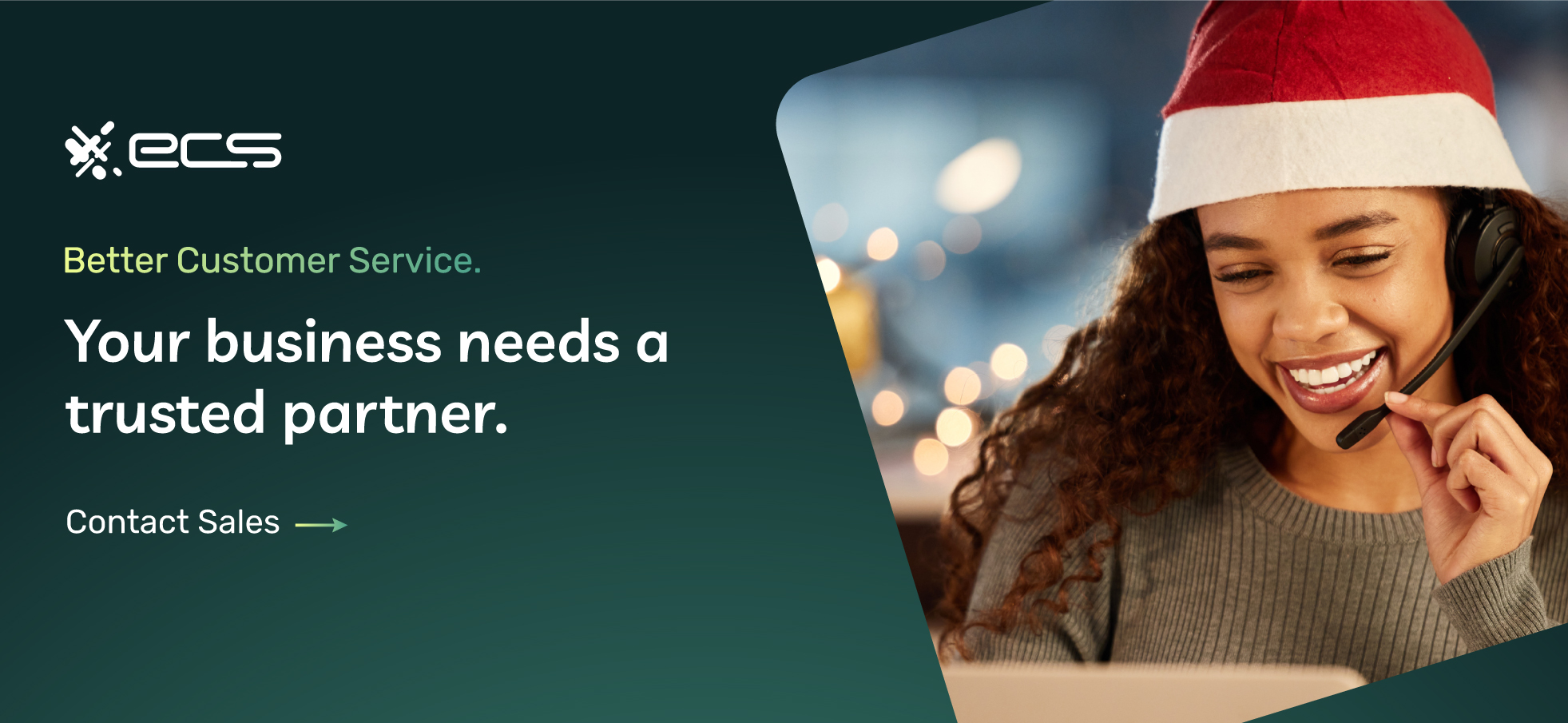
Better Customer Service
Customer service is crucial in payment processing. Any issue that arises could interfere with your ability to accept payments, which is something no business wants to deal with.
If you’ve had a question or issue in the past and you feel your payment processor was slow to answer, it may mean you need to look for an alternative.
But great customer service isn’t about just dealing with problems or issues that may come up. It’s also about finding a technology partner for your business. We all know technology is changing business faster than ever. This includes payment processing and new digital payment methods.
Your business needs a trusted partner in this area that makes sure you always have access to the latest technologies around processing.
As innovations like digital wallets increase in popularity, so will other digital payments. You need a payment processor who embraces these innovative technologies and helps you leverage their benefits for your own business.
Integrations
Payment integration means that your payment processing and other business systems work together for more streamlined operations. Integrations can also improve customer experience. For example, integrating certain billing options into your website to make managing payments easier for your customers.
Integrations can also mean connecting your payment processing to your accounting or other back-office software. This type of integration provides enhanced efficiency by reducing the work needed to transfer data back and forth between systems. It also ensures that all data is accurate and always up to date.
Today, many more businesses of all sizes are using CRM software to help them improve their analytical capabilities and sales pipelines. Having a fully integrated payment processing solution that can work with your CRM will boost its effectiveness even more.
When your CRM and payment systems are fully integrated, you will close deals faster and gain more insight into your customer behavior.
More Payment Options Mean More Sales
There may be payment options that have evolved recently, and your old payment processor or payment workflow can’t accept them. An easy way of increasing sales is adding more payment options for your customers.
For example, digital wallet payments such as Apple Pay and Google Pay are becoming more popular each year. For example, a recent Forbes poll shows that over half of Americans (53%) use digital wallets more than other traditional forms of payment.
However, for those businesses not accepting this new payment technology, there are some important trends to be aware of. In that same poll, 51% of respondents said they would stop shopping with a merchant that doesn’t accept digital payments.
What these trends show is that if you don’t accept these and other contactless payment methods, you may be losing out on as much as 50% of your potential customer base. The worst part is that you will likely have no idea why these customers are fleeing your business since most will just simply stop coming in.
But the solution to this is simple. Upgrade your payment processing to accept these new digital wallet payments. By upgrading now, you not only can access more potential customers and sales, but you can also future-proof your business as new digital payment options come to the market.
This is just one example, but it clearly shows how fast digital payments are evolving. It also shows why merchants who are early adopters of this new technology can quickly and easily gain a competitive advantage over other businesses that are slower to respond.
The Two Types of Payment Processors: Merchant Account vs Aggregate Account
Today, many newly established businesses may choose an aggregate payment provider without even realizing it.
An aggregate payment provider is much different than having your own merchant account through a payment processor. With an aggregate payment provider, you don’t actually have a merchant account. Instead, you share a merchant account with all of the payment provider’s other customers.
An example of this is a service such as Square or Stripe. Many businesses sign up for these services and don’t realize it’s not a true merchant account.
Using aggregate service providers almost guarantees that your fees will be higher than having your own merchant account. Aggregate payment providers can also lock or suspend your account at any time. If this happens during a busy time such as the holiday rush, the time it takes to resolve could cost you thousands of dollars or more.
If you’re using one of these aggregate payment providers, you should look into switching to your own merchant account before the next holiday season. Your savings will more than pay for the minor inconvenience of switching over.
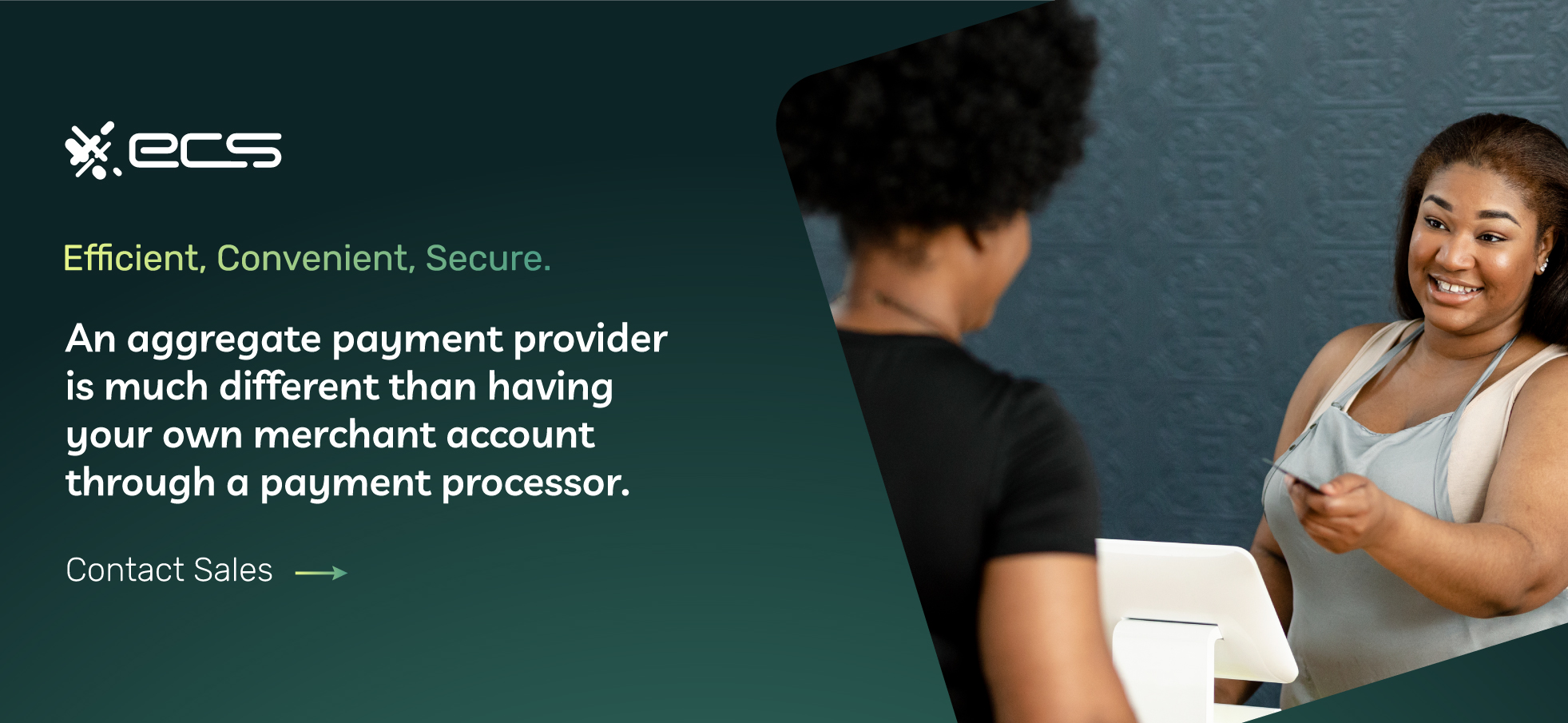
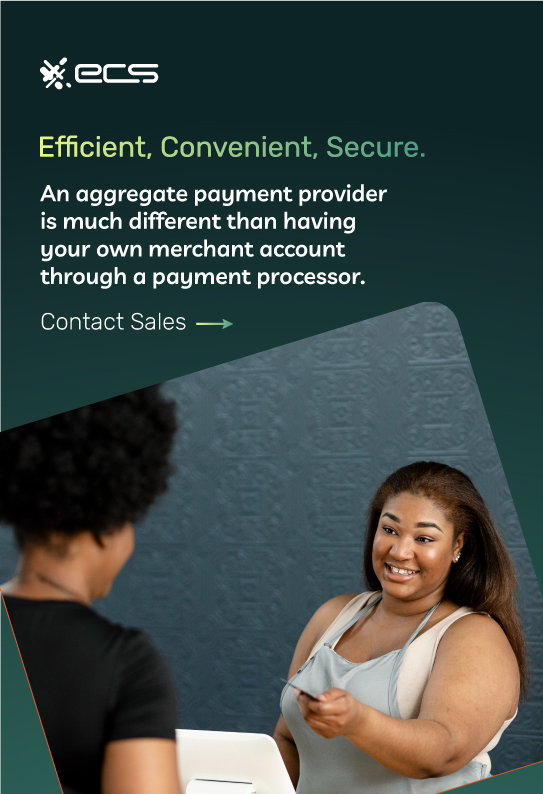
How Do I Compare Fees When Switching Payment Processing Companies?
We’ve mentioned how switching payment processors before the holidays can save you money on fees, but sometimes, comparing fee structures can be confusing.
This is because fee structures can vary, which means you aren’t always comparing apples to apples.
There are three common fee structures. Each one has its benefits, and choosing the right one will generally save you money.
Interchange-Plus
Interchange-plus pricing is the most popular fee structure for those looking to reduce their processing fees. This cost-effective fee structure essentially takes the interchange rate for each transaction and then adds a fixed fee on top of that rate. This means that each transaction can have a different fee, but you generally get a lower fee across the board.
Flat Rate Pricing
Flat rate pricing is common with aggregate payment providers, but some other processors use this as well. With this, you pay a flat processing fee for all transactions. This fee generally includes a per-transaction fee as well.
This fee structure is simpler to understand for most merchants. But they may pay more in some cases. This is best for a business that accepts credit cards and has a small average ticket size.
Tiered Pricing
Large corporations and retailers mostly use this fee structure. This fee structure breaks different transactions into tiers. Each tier then has its own fees associated with it. This is less common in smaller to medium-sized businesses.
Comparing Pricing Plans
It’s important to compare apples to apples when looking at different fees. This means understanding your current fee structure so you can compare and see what kind of cost savings you can get from switching.
When shopping for a new payment processor, they should also be able to help you with this. Showing them your current statement will allow them to determine your fee structure and compare it with their own offering.
Which Payment Features Should I Look For When Switching Processors?
Use the following checklist when researching new payment providers to ensure you find the best transaction processing for your business. A reliable payment processor should be able to offer you all of these features along with low processing fees.
- In-house customer service and support
- Transparent pricing structure that fits your sales volumes
- Full payment options beyond just credit and debit cards
- Integrated solutions compatible with your existing business software
- Customizable fraud protection
- Scalability to handle your sales growth
- Zero junk fees to help with monthly cost-cutting
- Mobile payment options and the ability to accept mobile wallets
- Choice of payment gateways
Help With Choosing A New Payment Processor
Whether you’re a new business just starting out or an established business with a proven history, there’s always room for payment optimization and improving your business operations.
Contact ECS Payment and speak with one of our payment experts. They can explain our innovative payment solutions that can help your business significantly reduce costs and improve customer experience.
If you haven’t looked at your payment processing recently, now is the time to make sure it’s working as hard as you do.
Frequently Asked Questions About Finding A New Payment Processor
Switching to a new payment processor for the holidays can be a strategic move to ensure your business doesn’t miss out on potential savings, better payment solutions for the rush, and increased revenue. ECS Payments can offer your businesses with innovative payment solutions that reduce costs and improve your customer experience.
The holiday season represents a significant opportunity for businesses to boost sales. Holiday sales can account for about 25% of a business’s total annual revenue. So, to make the most of this opportunity, businesses need to plan ahead, ensuring their payment processing is optimized for the holiday rush.
t’s essential to reevaluate your current payment processor, especially as your business grows and your priorities change. New payment processors can provide higher cost savings and alternative payment options, tied to a better customer experience. Contact ECS Payments if you’re ready to make the switch.
Switching to a new payment processor may involve some termination fees, but paying these can be worth it for a more efficient payment processing system, and lower processing rates. If you have a contract with your current payment processor, review it’s terms, including auto-renewal clauses and cancellation fees o you are well aware of what to expect when you make the switch. ECS payments is happy to assist in data migration when you are ready to work with us.
